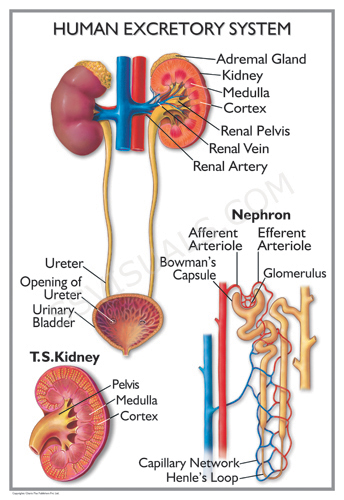Timeline of Early American Explorers
Monday -
1513 - Juan Ponce de León finds and names Florida. Legend has it, he searches for the Fountain of Youth.
Vasco Núñez de Balboa becomes the first European to reach the Pacific Ocean.
Lesson plan
youtube
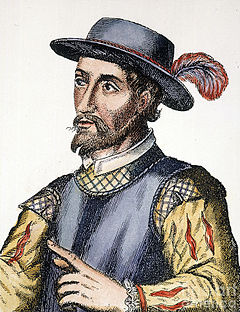
 1519
1519 - Alonso Álvarez de Pineda sails from Florida to Mexico, mapping the gulf coast along the way.
Legends of America
Captain
Alonso Alvarez de Pineda (1494-1520) - A
Spanish explorer and map-maker,
Pineda and his crew were probably the first Europeans in
Texas, claiming it
for Spain. Little is known of Pineda's early life, but, in 1517, he was
sailing for the Spanish Governor of Jamaica, Francisco de Garay. The Spanish
thought there must be a sea lane from the Gulf of Mexico to Asia and In 1517
and 1519, Pineda led several expeditions to map the western coastlines of
the Gulf of Mexico, from the Yucatan Peninsula to Panuco River, just north
of Veracruz, Mexico.
On
June 2, 1519, Alvarez de Pineda entered a large bay with a sizable Native
American settlement on one shore. He sailed upriver for 18 miles and
observed as many as 40 villages on the banks of the large, deep river he
named "Espíritu Santo." It has been long assumed that he was the first
European report of the mouth of the
Mississippi River. Álvarez de Pineda
continued his journey westward and one of the regions he explored and mapped
was the area around Corpus Christi Bay, entering the bay on the feast day of
Corpus Christi, hence the name. Shortly thereafter, he sailed up a river he
named Las Palmas, where he spent over 40 days repairing his ships. The Las
Palmas was most likely the Rio Grande River. The expedition established the
remainder of the boundaries of the Gulf of Mexico, while disproving the idea
of a sea passage to Asia. It also verified that
Florida was a peninsula
instead of an island, and allowed Alvarez de Pineda to be the first European
to see the coastal areas of western Florida, Alabama, Mississippi,
Louisiana, and
Texas, lands he called "Amichel." His map is the first known
document of
Texas history and was the first map of the Gulf Coast region of
the United States. The next year, he was killed in a fight with Huastec Indians in Panuco, Mexico.(from:http://www.legendsofamerica.com/ah-spanishexplorers5.html)

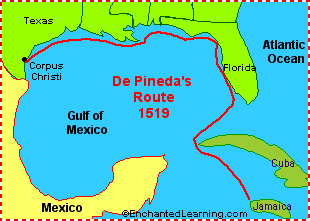
1519-1521 - Hernán Cortés defeats the Aztecs and conquers Mexico.
Cortés was a Spanish conquistador (soldier and explorer) who conquered the vast Aztec empire in central America.
Hernán (or Hernando) Cortés was born in 1485 in Medellín, western
Spain. He initially studied law but left university to make his fortune
in the Americas.
In 1504 he sailed for Santo Domingo (Dominican Republic), moving to
Cuba in 1511 where he assisted Diego Velázquez in his conquest of the
island and made his reputation for courage and daring.
In 1518 Cortés persuaded Velázquez, who was now governor, to make him
commander of an expedition to Mexico. It had only recently been
discovered by Europeans and was rumoured to contain great wealth.
Shortly before Cortés set sail, Velázquez, who was now suspicious of
his motives, cancelled his commission. Cortés ignored Velázquez and set
out. On arrival he established a settlement (now Veracruz) and made
local allies.
The major civilisation in the region was that of the Aztecs, led by
Montezuma II. Cortés headed for the Aztec capital, Tenochtitlán, which
was a three-month journey over difficult terrain. It is thought that
Cortés’ arrival coincided with an Aztec prophecy about a white-skinned
god arriving from the east, which would explain why Montezuma welcomed
Cortés and gave him lavish gifts. However, relations quickly
deteriorated and, fearing an attack, Cortés took Montezuma hostage,
demanding a huge ransom from his people.
In April 1520, Velázquez sent an expedition to capture Cortés. As
Cortés left to fight the expedition, an Aztec revolt began in
Tenochtitlán. Cortés returned and obliged Montezuma to face the crowd,
but the Aztec leader was struck by a stone and died. The Spanish were
driven out of the city, incurring heavy losses.
Cortés re-organised his forces and in 1521 returned to Tenochtitlán,
which fell after a three-month siege. A new settlement, Mexico City, was
built on the ruins and settled with Spanish colonists, becoming the
centre of Spanish America. Cortés secured control over Mexico,
inflicting great cruelty on the indigenous population. Western diseases
such as smallpox also caused huge fatalities.
In 1523 Cortés was named governor and captain general of New Spain.
In 1528, amid Spanish fears that he was becoming too powerful, he was
forced to return to Spain where the king reinstated him as captain
general, but not to the position of civil governor. On his return to
Mexico, his powers were significantly limited and his activities
monitored. He continued to explore Central America, hoping to find a
strait from the Atlantic to the Pacific. He failed, instead discovering,
and naming, California.
In 1541, Cortés returned to Spain an embittered man and retired to an estate near Seville where he died on 2 December 1547.
From http://www.bbc.co.uk/history/historic_figures/cortes_hernan.shtml

 Biography.com
Interactive map
Wednesday
Biography.com
Interactive map
Wednesday -
1519-1522 -
Ferdinand Magellan
sails around South America into the Pacific. Despite Magellan's death
in 1521, his expedition becomes the first to circumnavigate the globe.

 biography video
1523
biography video
1523 - Pánfilo de Narváez became governor of Florida but died
after dealing with a hurricane, attacks by native americans, and
disease.

 Panfilo Slide show and quiz
Panfilo Slide show and quiz
Friday -
- 1524 - In a French sponsored voyage, Giovanni de Verrazano discovers the Hudson River before sailing north to Nova Scotia.

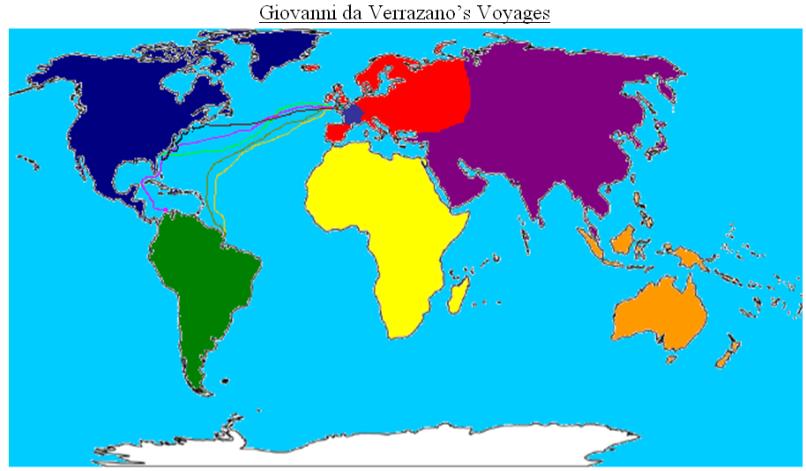
Gorton History Channel
- 1534-36 - One of the four survivors from the Narváez
expedition cited above, Cabeza de Vaca, explores from the
Sabine River to the Gulf of California. When he arrives in Mexico City,
his tales reinforce ideas that the Seven Cities of Cibola, also known as
the Seven Cities of Gold, exist and are located in New Mexico.
 Cabeza de Vaca
Cabeza de Vaca-
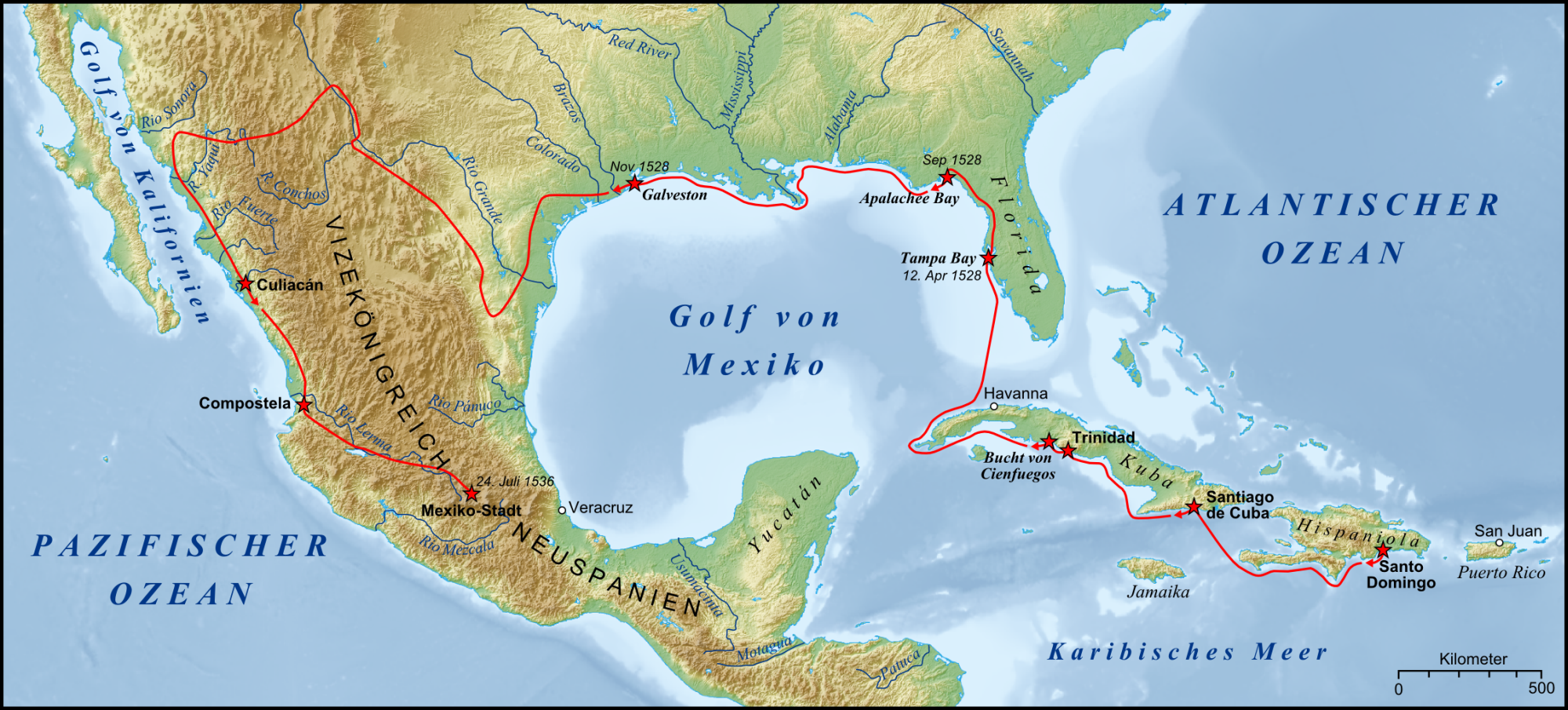
Youtube biography
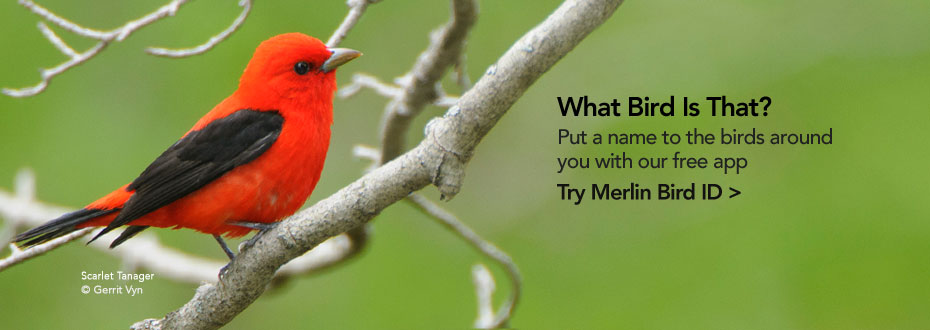

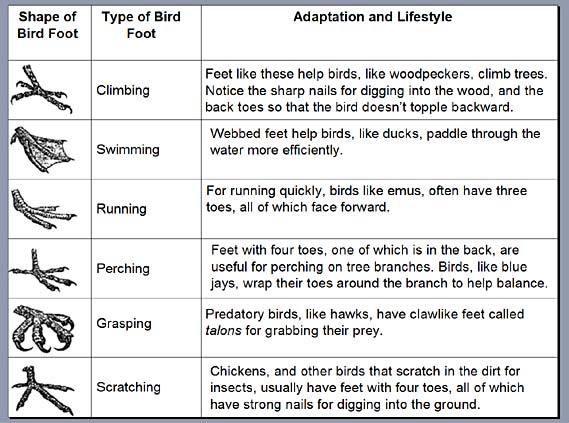







 Cabeza de Vaca
Cabeza de Vaca
